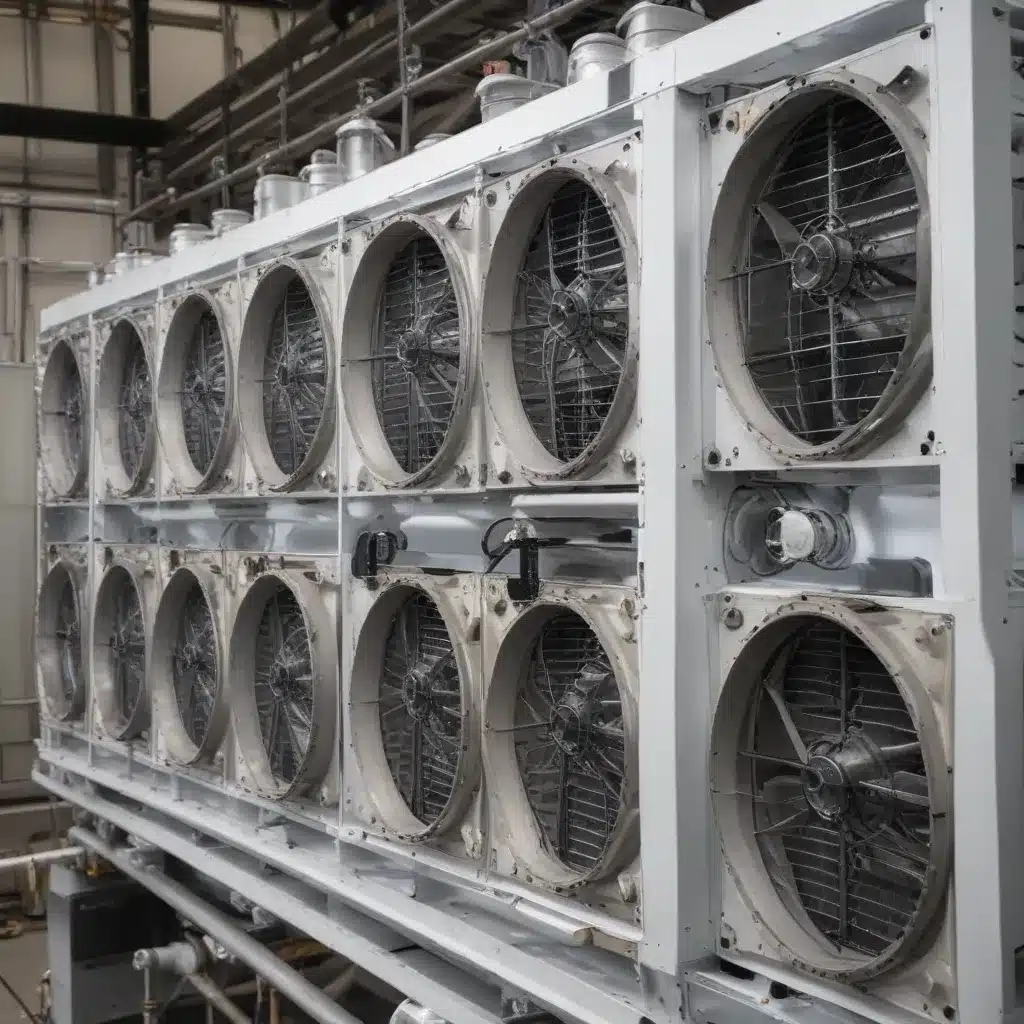
In the dynamic and rapidly evolving world of industrial heating and cooling systems, air-cooled heat exchangers have emerged as the backbone of efficient thermal management. As the demand for energy-efficient and environmentally responsible solutions continues to rise, the need for pioneering maintenance strategies has become increasingly crucial.
Unlocking the Power of Air-Cooled Heat Exchangers
Air-cooled heat exchangers are the workhorse of many industries, from data centers and power plants to petrochemical facilities and HVAC systems. These versatile heat transfer devices leverage the natural cooling capabilities of ambient air to dissipate heat, making them a cost-effective and reliable choice for a wide range of applications.
However, as the performance demands on these systems continue to escalate, driven by factors such as the rise of AI-powered data centers and the need for more efficient industrial processes, maintaining optimal heat exchanger performance has become a critical challenge. Proactive and innovative maintenance strategies are the key to unlocking the full potential of air-cooled heat exchangers and ensuring their long-term efficiency.
Maximizing Thermal Performance Through Preventive Maintenance
One of the fundamental pillars of effective air-cooled heat exchanger maintenance is a robust preventive maintenance program. By adopting a proactive approach, facilities can identify and address potential issues before they lead to costly downtime or reduced efficiency.
Periodic Inspections and Cleaning
Regular inspections of the heat exchanger’s critical components, such as the fin assembly, tube bundles, and fan systems, are essential. These inspections can identify potential areas of concern, such as fouling, corrosion, or mechanical wear, allowing for timely intervention and remediation.
Equally important is the implementation of a comprehensive cleaning regimen. Accumulation of dirt, dust, and other contaminants on the heat exchanger’s surfaces can significantly impede heat transfer, leading to a reduction in overall thermal performance. Implementing a scheduled cleaning protocol, tailored to the specific operating environment and conditions, can help maintain the exchanger’s efficiency and extend its lifespan.
Optimizing Fan Performance
The fan system is a crucial component of air-cooled heat exchangers, responsible for driving the airflow required for effective heat dissipation. Ensuring the proper maintenance and optimization of fan performance is a key aspect of enhancing overall heat exchanger efficiency.
Regular inspections and maintenance of fan components, such as bearings, blades, and motors, can help maintain optimal airflow and prevent premature failures. Additionally, proactive adjustments to fan speed and blade pitch can enhance the exchanger’s ability to adapt to changing load conditions, further optimizing its thermal performance.
Predictive Maintenance and Condition Monitoring
The advent of advanced sensor technologies and data analytics has paved the way for predictive maintenance strategies, which can significantly enhance the performance and reliability of air-cooled heat exchangers. By continuously monitoring the operational parameters of the heat exchanger, such as vibration, temperature, and pressure, facility managers can identify potential issues before they manifest as serious problems.
This approach allows for targeted interventions, minimizing unplanned downtime and maximizing the heat exchanger’s efficiency. By leveraging predictive maintenance, facilities can transition from a reactive to a proactive maintenance mindset, ultimately improving system reliability and extending the useful life of their air-cooled heat exchangers.
Embracing Innovative Heat Exchanger Designs
In addition to implementing robust maintenance strategies, the adoption of innovative heat exchanger designs can further enhance the performance and energy efficiency of these critical systems.
Advancements in Fin Geometry and Materials
The design of the fin assembly, which plays a crucial role in heat transfer, has been the subject of extensive research and development. Innovative fin geometries, such as wavy or louvered fins, can improve airflow patterns and increase the heat transfer surface area, leading to enhanced thermal performance.
Moreover, the use of advanced materials, such as aluminum alloys or coated fins, can enhance the heat exchanger’s resistance to corrosion and fouling, further optimizing its long-term efficiency and reliability.
Integrated Cooling Solutions
The growing demand for high-density computing applications, such as those found in modern data centers, has driven the development of integrated cooling solutions that seamlessly combine air-cooled heat exchangers with other cooling technologies.
These hybrid systems, which may incorporate elements of liquid cooling or evaporative cooling, can provide a more holistic and adaptive approach to thermal management, addressing the unique challenges posed by emerging high-performance computing needs.
Sustainable Practices for Air-Cooled Heat Exchanger Maintenance
As the global focus on environmental sustainability intensifies, the maintenance of air-cooled heat exchangers must also embrace eco-friendly practices to minimize their environmental impact.
Energy-Efficient Upgrades and Retrofits
Facilities can explore opportunities to upgrade or retrofit their existing air-cooled heat exchangers with more energy-efficient components, such as high-performance fans, variable-speed drives, and optimized fin designs. These upgrades can significantly reduce the overall energy consumption of the heat exchanger system, contributing to both cost savings and environmental sustainability.
Responsible Maintenance Practices
Incorporating sustainable maintenance practices can also play a crucial role in enhancing the environmental footprint of air-cooled heat exchangers. This may include the use of eco-friendly cleaning solutions, the proper disposal of waste materials, and the implementation of preventive maintenance strategies that minimize resource consumption and waste generation.
By embracing these pioneering maintenance strategies, facilities can not only optimize the performance and efficiency of their air-cooled heat exchangers but also contribute to a more sustainable future.
Conclusion: Embracing the Future of Air-Cooled Heat Exchanger Maintenance
As the demands on industrial heating and cooling systems continue to evolve, the importance of effective air-cooled heat exchanger maintenance has never been more critical. By adopting proactive, innovative, and sustainable maintenance strategies, facilities can unlock the full potential of these versatile heat transfer devices, driving improved thermal performance, enhanced energy efficiency, and reduced environmental impact.
The Air Cooled Heat Exchangers blog is dedicated to providing industry professionals with the latest insights, best practices, and cutting-edge solutions in the realm of air-cooled heat exchanger technology and maintenance. Stay tuned for more pioneering content that will empower you to elevate the performance and sustainability of your air-cooled heat exchanger systems.

